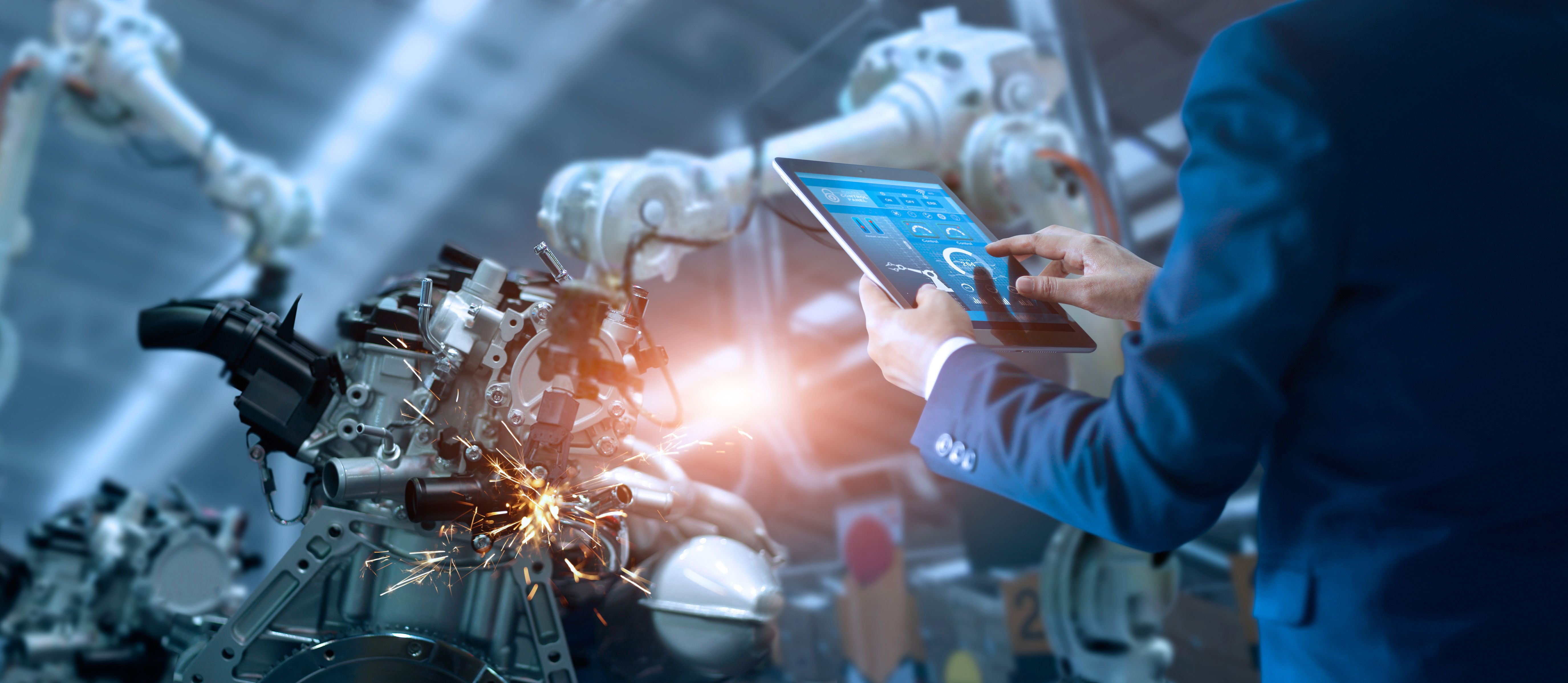Breakthrough Study Uses Laser-Induced Breakdown Spectroscopy to Identify Defects in Metal-Additive Manufacturing Parts
Researchers have developed a new methodology using laser-induced breakdown spectroscopy (LIBS) and the support vector machine model (SVM) to classify defects in metal-additive manufacturing (AM) parts.
A recent study published in Journal of Analytical Atomic Spectrometry sheds light on a new method for rapidly identifying and classifying defects in manufacturing equipment (1). This new method aims to improve metal-additive manufacturing part performance (1).
Engineer manager checking and controling automation robot arms machine in intelligent factory industrial on real time monitoring system software. Welding robotics and digital manufacturing operation. | Image Credit: © ipopba - stock.adobe.com

The research team was comprised of scientists from Changchun University of Technology, Jilin University of Architecture and Technology, and Beihua University. The researchers focused their efforts on using laser-induced breakdown spectroscopy (LIBS) and support vector machine model (SVM) to differentiate between several types of defects in AM parts (1).
SVM is a machine learning model used for classification and regression analysis. It works by finding the optimal hyperplane that separates different classes of data points in a high-dimensional feature space. SVM aims to maximize the margin between the decision boundary and the nearest data points of each class, making it robust against overfitting (1). A kernel function transforms the data into a higher-dimensional space, where a linear decision boundary can be found (1).
Defects in AM components include things such as cracks, bulges, and holes. These defects can be serious in nature, directly harming the components’ functionalities (1). Therefore, the ability to quickly identify and categorize these defects is crucial for implementing appropriate remedial measures (1).
The researchers used samples of AM parts without defects as a control group and compared them to samples with cracks, bulges, and holes (1). Various data preprocessing methods and model evaluation criteria were employed to compare the methods to each other (1). Ultimately, the LIBS spectrum, with the first derivative as the input variable, was found to yield the best results when constructing the SVM model for defect classification (1).
The accuracy, Kappa coefficient, and Jaccard coefficient of the developed model were reported to be 0.9922, 0.9896, and 0.9846, respectively (1). These impressive figures demonstrate the effectiveness of combining LIBS technology with the SVM algorithm for defect classification in AM parts (1). By quickly identifying and classifying defects, manufacturers can address each issue appropriately, leading to enhanced component performance and quality. This, in turn, will contribute to the further development and advancement of metal-additive manufacturing.
This study presents an innovative way how LIBS can be used to detect defects in AM parts. Future research studies are likely to focus on improving on the methodology presented in this study. The researchers hope that their efforts will lead to more reliable and efficient manufacturing processes, aided by spectroscopic techniques (1).
Reference
(1) Lin, J.; Yang, J.; Huang, Y.; Lin, X.; Che, C.Laser-induced breakdown spectroscopy and stoichiometry to identify various types of defects in metal-additive manufacturing parts. J. Anal. At. Spectrom. 2023, ASAP. DOI: 10.1039/D3JA00060E
Laser Ablation Molecular Isotopic Spectrometry: A New Dimension of LIBS
July 5th 2012Part of a new podcast series presented in collaboration with the Federation of Analytical Chemistry and Spectroscopy Societies (FACSS), in connection with SciX 2012 — the Great Scientific Exchange, the North American conference (39th Annual) of FACSS.